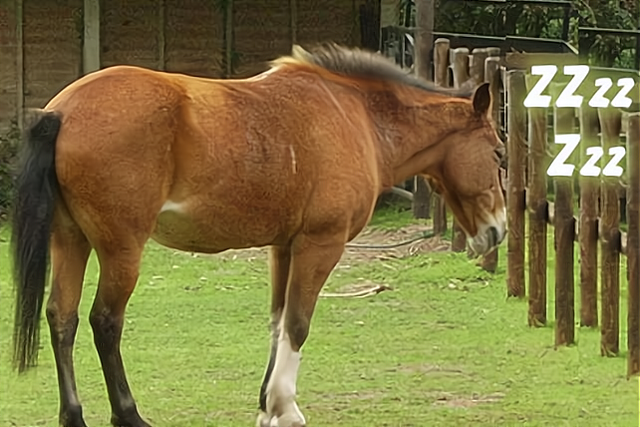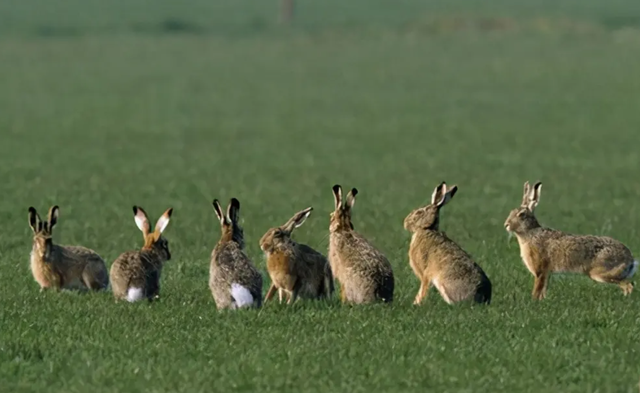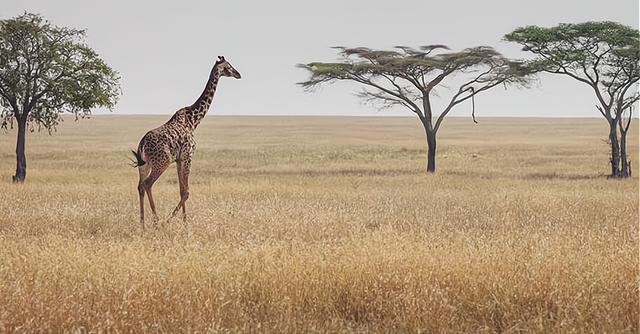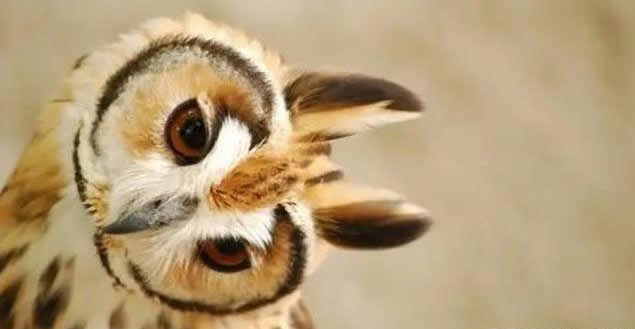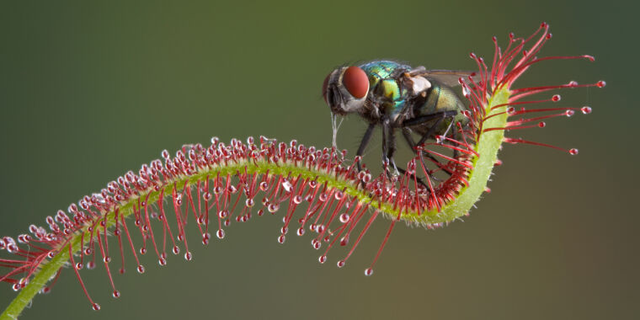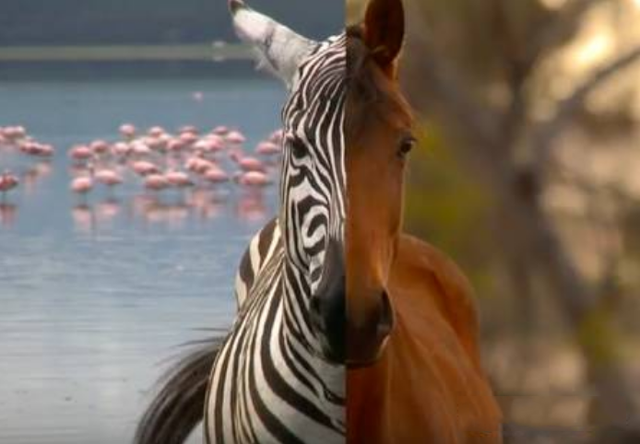When we humans feel very tired, we often say that we can fall asleep standing up, but this is just a description. In reality, it is impossible for humans to sleep standing up, but there are many animals in nature that have this such a skill that humans do not have, for example, horses can sleep standing up effortlessly.
Of course, horses stand on four feet, so it makes sense that their bodies are more stable than humans', but what about birds? Birds stand on two feet just like humans, but we all know that birds can also sleep standing up. So the question arises, both humans and birds stand on two feet, so why can birds sleep standing up but not humans?
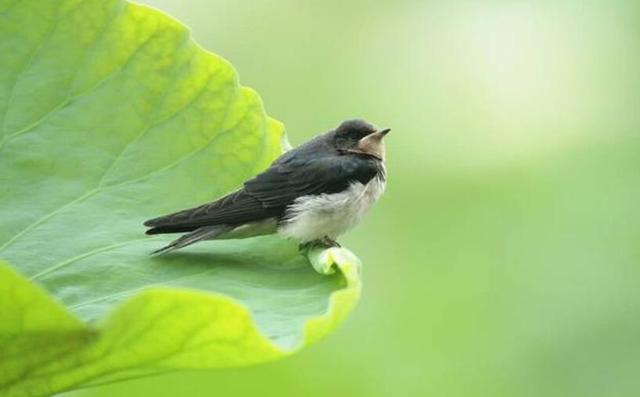
When we humans remain in a standing position, we need muscle strength to support us, and this is all done 'automatically' by our brain, without our subjective involvement.
If we gradually fall asleep in a standing position, the brain's instructions to the relevant muscles become more and more blurred and the muscles gradually relax to a point where our body rapidly loses its balance because there is not enough support.
In this case, the brain is immediately awakened by self-protection mechanisms and redirects the relevant muscles, and we are awake. If the brain doesn't wake up quickly enough, this is what it can look like (and this is while sitting).
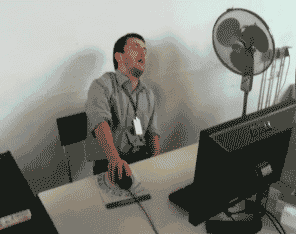
The simple fact is that when humans sleep their muscles relax, and when they do, humans cannot gain the strength to maintain a standing position, so they cannot sleep standing up. And how do birds sleep standing up?
The answer is simple: Birds do not need muscular strength to maintain a standing posture. They can stand firmly and passively without relying on any muscular activity, simply by virtue of their weight and the reaction forces of the ground counteracting each other, and some birds even need only one foot to do so, for example, flamingos can sleep while standing on one foot.
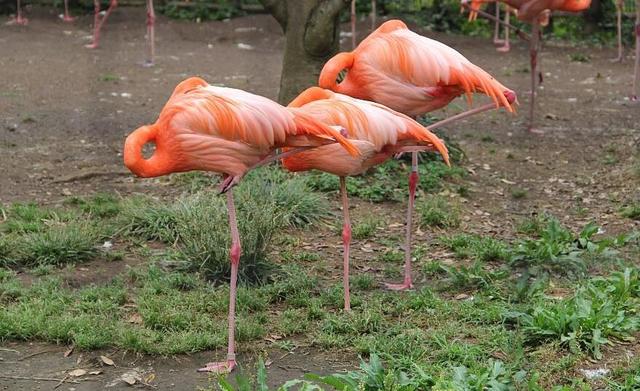
Note that the bones of the flamingo's legs, where we usually think of the knee, are actually its ankles, while the flamingo's knees are hidden underneath its feathers.
As well as being able to sleep standing up on the ground, many birds can also sleep standing directly on a tree branch, so how do they do it?
Birds that can sleep standing on branches usually have muscles that are suitable for perching on trees and holding branches, such as the "Peroneus medius", "Through toe flexors", "Perching muscles" And so on. They are able to use the cooperation between tendons, tendon sheaths and skeletal joints to keep themselves in a standing position with their muscles relaxed.
The feet of these birds have four toes, "Three in front and one at the back", and when the relevant muscles contract, the birds' legs straighten and their toes "Spread out", while conversely their toes tend to "Grip "The opposite is true. The muscles associated with the bird are contracted before it lands on the branch, and then loosen up once it is on the branch, so that its four toes naturally snap onto the branch.
At the same time, the joints of the bird's leg bones flex due to the pressure of their weight, which tightens the tendons of the associated muscles, thus providing the bird with the 'grip' that allows their toes to cling to the branch. When the bird is sleeping, the muscles relax further and the pressure of its weight causes the leg joints to bend even more and its toes to grip even tighter.
(if you're not convinced by this feature of birds, next time you buy a white-striped chicken you might want to study it carefully to see if its claws 'open' when its legs are straight and 'grip' when its legs are bent)
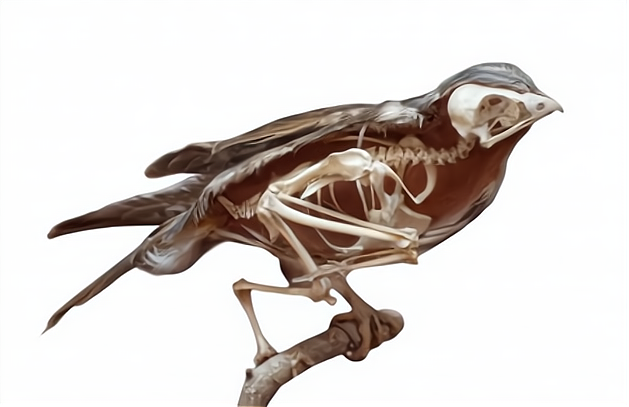
As shown above, when a bird stands on a branch, its leg bones take on a shape similar to the letter 'z', somewhat similar to the squatting position we have in humans, which facilitates the stabilisation of the centre of gravity and thus allows the bird to maintain its balance more easily.
Because birds can maintain a stable standing position with relaxed muscles, they are able to sleep standing up, which is not possible for humans who also stand on their feet.
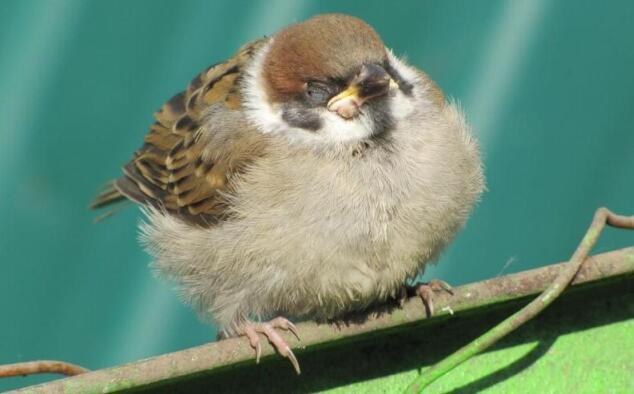
The fact that birds have evolved this skill is also a sign of adaptation to nature. In a crisis-ridden nature, even when sleeping, birds must always be in a state where they can take off quickly.

